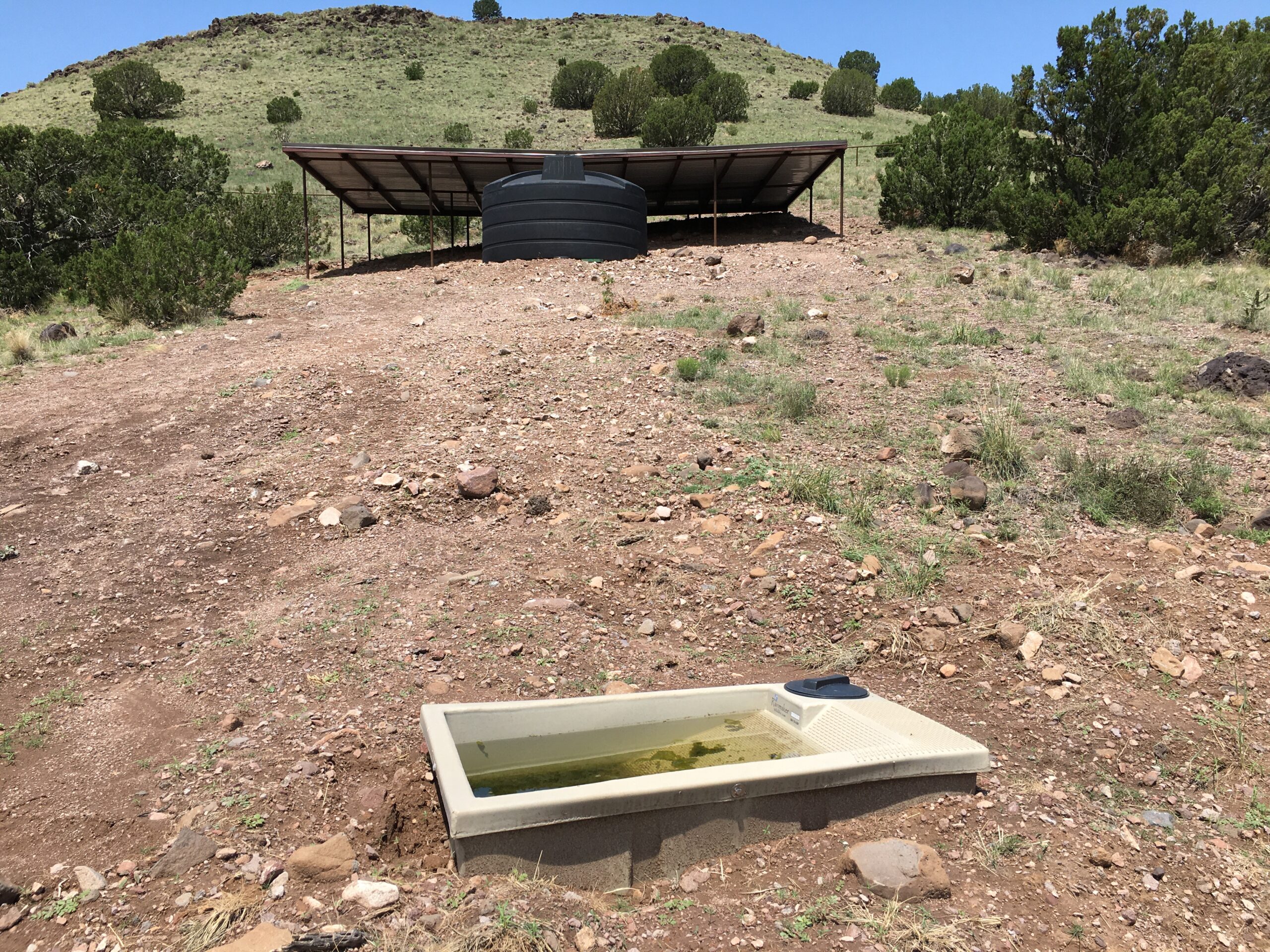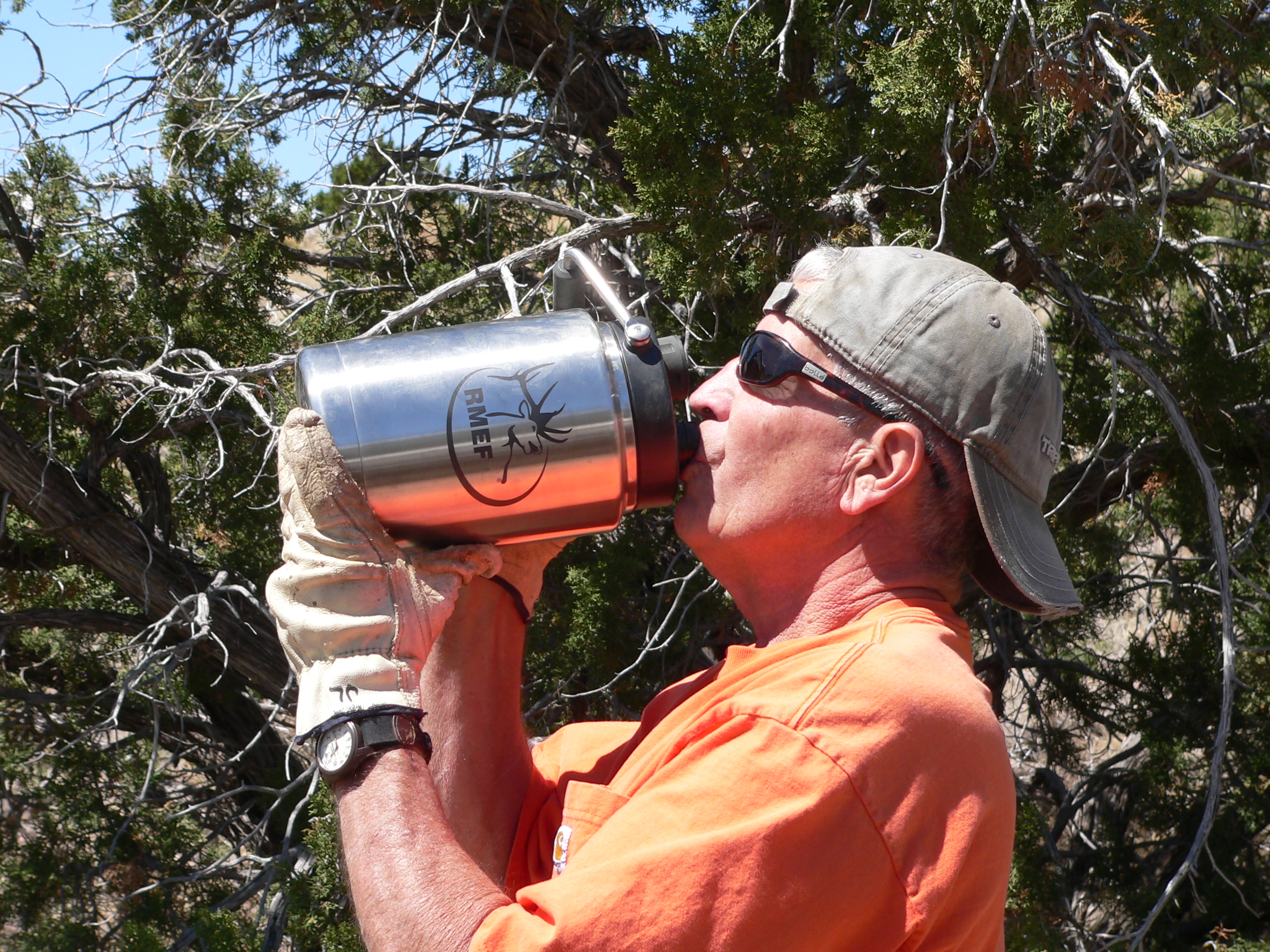To the uneducated, it looked like something out of a sci fi film – a metallic contraption with a round, winged top pointing toward the heavens, sitting on the side of a barren New Mexico mountain. In reality, it’s a uniquely-designed water catchment system. In other words, a gizmo that collects and stores water when the rains come that provides life-sustaining liquid for elk and other desert creatures in need of a dependable water source.
In May 2021, members of the Rocky Mountain Elk Foundation’s Albuquerque Chapter joined other volunteers to brave the desert sun in the Chupadera Mountains of west-central New Mexico to carry out a conservation transformation. They removed umbrella wings from an old wildlife water drinker and installed a new 5,000-gallon poly storage tank, rubber-tired trough drinker in its place that includes a 1,000-square-foot metal catchment apron.

The new water development services an approximate one to two square mile area for emphasis species such as elk, mule deer and desert bighorn sheep. The project supports a much larger service area for more mobile wildlife species like elk, which are more abundant within the area.

Project planners took a different and more modern approach on the replacement project for purposes of increasing the life span of the facility by utilizing materials that are less susceptible to deterioration (poly storage tank and drinker), vandalism and elk damage on the exclosure fencing. In addition, volunteers installed a catchment that is four times the area of traditional catchments and doubled the storage capacity of traditional storage tanks (2,200 gallon vs 5,000 gallon). To allow access to water by smaller wildlife species and to mitigate the potential of drowning and death, the drinker has a built-in concrete and rock escape ramp. The new water development design reduces annual and long-term maintenance needs and costs and also provides for a more reliable and long-term water source for years to come.
The bottom line is New Mexico Department of Game and Fish Habitat Stamp Program funds covered the cost of purchase and installation while RMEF and Bureau of Land Management volunteers provided the muscle and manpower. They also rolled up and removed four-strand barbed wire while replacing it with wildlife-friendly fencing that keep cattle out, and allow wildlife to enter.
(Photo source: Rocky Mountain Elk Foundation)
